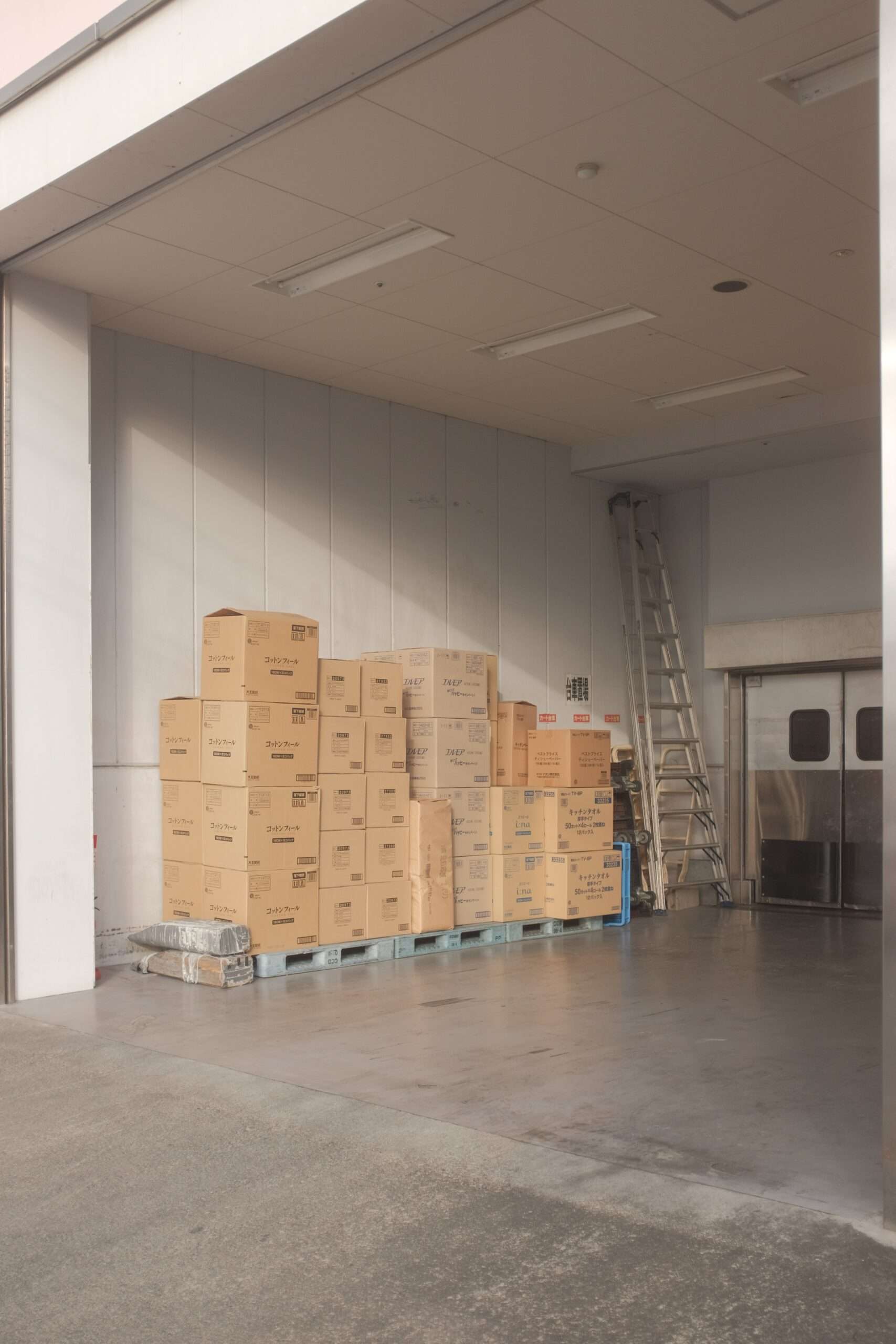Insulating a shipping container is a crucial consideration for those looking to embark on the path of off-grid living. The process of insulating these containers, which are typically made of steel and have limited insulation properties, presents a unique challenge. In this article, I will explore various methods of insulating shipping containers, focusing on the easiest and most effective approaches. By the end of this discussion, readers will have a comprehensive understanding of the available options and be better equipped to make informed decisions about insulating their shipping containers for off-grid living.
Understanding the Importance of Insulating a Shipping Container

Why is insulation necessary for a shipping container?
Insulating a shipping container is essential for various reasons. First and foremost, insulation helps in maintaining a comfortable indoor temperature within the container, regardless of the external climate conditions. This is especially significant if the shipping container is being converted for residential or commercial use, such as off-grid living or storage facilities.
Insulation also aids in reducing energy consumption by minimizing the need for excessive heating or cooling. By providing a barrier against external elements, insulation prevents the transfer of heat or cold, allowing for more efficient use of heating, ventilation, and air conditioning (HVAC) systems.
Furthermore, insulation helps to prevent condensation and moisture buildup inside the container. This is particularly crucial because condensation can lead to mold growth, deterioration of materials, and the potential for structural damage. Insulating the container effectively limits the occurrence of condensation.
Benefits of insulating a shipping container
Insulating a shipping container offers numerous benefits beyond temperature regulation and moisture control. Some of the key advantages include:
Enhanced Energy Efficiency: Proper insulation significantly improves the energy efficiency of a shipping container. Insulation reduces heat loss in colder climates and heat gain in warmer climates, resulting in reduced reliance on heating and cooling systems, ultimately leading to lower energy bills.
Improved Soundproofing: Insulation materials have excellent sound-absorbing properties, helping to reduce external noise pollution. This is particularly beneficial if the shipping container is used as a music studio, office space, or even as a living area in a noisy environment.
Increased Durability: Insulation not only protects the occupants from external weather conditions but also safeguards the container itself. By reducing the exposure of the container’s walls to extreme temperatures and moisture, insulation can prevent rusting, corrosion, and overall deterioration.
Versatile Applications: Insulating a shipping container makes it highly adaptable for different purposes. Whether it’s converting the container into a residential space, office, or storage unit, insulation allows for a more comfortable and functional environment.
Resale Value: Insulated containers have a higher resale value compared to uninsulated ones. The added insulation enhances the container’s overall quality, making it more attractive to potential buyers or renters.
Types of Insulation Materials
When it comes to insulating a shipping container, there are various materials to choose from, each with its own advantages and disadvantages. Here are some commonly used insulation materials:
Fiberglass insulation
Fiberglass insulation is a popular choice due to its affordability and availability. It consists of thin glass fibers that trap air pockets and act as an effective thermal insulator. Fiberglass insulation is relatively easy to install and can be fitted between the container’s inner wall panels or ceiling joists. However, caution must be exercised during installation to prevent exposure to the tiny glass fibers, which can be harmful if inhaled.
Spray foam insulation
Spray foam insulation is a versatile and efficient option for insulating shipping containers. It is applied as a liquid, expanding and solidifying into a foam that adheres to the container’s walls. Spray foam insulation offers excellent thermal protection, filling all gaps and voids to create a seamless barrier. However, professional installation is often recommended due to the technical expertise required.
Polyurethane panels
Polyurethane panels, also known as SIPs (Structural Insulated Panels), provide both insulation and structural support. These panels consist of a foam core sandwiched between two rigid panels, typically made of plywood or oriented strand board (OSB). Polyurethane panels offer high insulation values and are relatively easy to install. They can be attached to the container’s interior or exterior walls, providing an airtight seal.
Reflective foil bubble insulation
Reflective foil bubble insulation is a lightweight option that utilizes layers of foil and air-filled bubbles. The reflective foil reflects radiant heat, while the air pockets provide insulation. This type of insulation is easy to handle and install, making it a popular choice for DIY projects. However, it may not be as effective in extreme weather conditions or for long-term use.
Natural insulation materials
Natural insulation materials, such as sheep’s wool, hemp, or cellulose, are eco-friendly alternatives to synthetic insulation. These materials offer good thermal properties and are often treated to be fire-retardant and resistant to pests. However, they may be more expensive and require careful sourcing to ensure sustainability and quality.
Comparison of insulation materials
Choosing the right insulation material depends on factors such as budget, climate, application, and personal preference. Each material has its own benefits and limitations, making it essential to consider the specific requirements of the shipping container project. Conducting thorough research and consulting with professionals can help determine the most suitable insulation material.
Preparing the Shipping Container for Insulation
Before starting the insulation process, it is important to properly prepare the shipping container. This includes the following steps:
Cleaning and decluttering the container
Before insulation can be installed, it is necessary to clean the container thoroughly. Remove any dirt, dust, or debris from the interior and exterior surfaces. Declutter the container and ensure that it is free from any unnecessary materials or objects.
Checking for any damages or rust
Inspect the shipping container for any damages, such as holes, dents, or signs of rust. Repair any affected areas to ensure a solid and stable foundation for the insulation. Addressing these issues prior to insulation can prevent further deterioration and improve the overall effectiveness of the insulation.
Applying protective coatings
Consider applying protective coatings, such as rust inhibitors or anti-corrosion paints, to the container’s interior and exterior surfaces. This additional layer of protection can help prevent future rusting or decay, extending the lifespan of the container and enhancing the insulation’s performance.
Sealing any gaps and openings
Seal any gaps or openings in the container’s walls, floor, and roof to prevent air leakage and moisture intrusion. This can be done using sealants, caulk, or weatherstripping. Ensuring a tight seal will enhance the insulation’s effectiveness and help maintain a controlled interior environment.
By thoroughly preparing the shipping container, the insulation process can be carried out more effectively, maximizing the benefits of insulation and ensuring long-term durability.

Methods of Insulating a Shipping Container
Shipping containers can be insulated using various methods, depending on the desired outcome and application. The following are the most common methods used:
Interior insulation
Interior insulation involves installing insulation materials on the interior surface of the shipping container. This method is relatively easier to implement and provides a clean and finished appearance. Interior insulation does not alter the container’s exterior dimensions, making it a suitable option if the container’s aesthetics are a priority.
Exterior insulation
Exterior insulation involves applying insulation materials to the exterior surface of the shipping container. This method provides a more efficient thermal barrier and minimizes the risk of condensation forming inside the container. However, exterior insulation may increase the width and height of the container, potentially affecting its transportation and aesthetics.
Combined interior and exterior insulation
The combined method involves utilizing both interior and exterior insulation to achieve optimal thermal performance. This approach offers the advantages of both methods while minimizing their respective drawbacks. Combined insulation provides enhanced insulation values and ensures a more controlled and comfortable interior environment.
Comparison of insulation methods
Choosing the appropriate insulation method depends on several factors, including climate, available space, budget, and the specific requirements of the project. Balancing insulation effectiveness, installation complexity, structural impact, and aesthetics will help determine the most suitable method for insulating the shipping container.
Easiest and Most Effective Insulation Methods
While each insulation method has its merits, several options are considered the easiest and most effective for insulating a shipping container. These methods include:
Fiberglass insulation for interior
Fiberglass insulation is a straightforward and cost-effective solution for interior insulation. It can be installed between the container’s wall panels, roof joists, and floor joists. The insulation is placed snugly into the wall cavities, creating a thermal barrier and reducing heat transfer. Fiberglass insulation can be easily sourced from local suppliers and is relatively simple to install, making it an excellent choice for DIY projects.
Spray foam insulation for exterior
Spray foam insulation is a popular choice for exterior insulation due to its efficiency and durability. It is sprayed directly onto the container’s exterior surface, expanding to fill all gaps and seams. Spray foam insulation offers excellent thermal and moisture protection, creating a seamless barrier against the elements. While professional installation is often recommended for spray foam insulation, experienced individuals can also undertake the process with proper safety precautions.
Polyurethane panel installation
Polyurethane panels provide both insulation and structural support for shipping containers. These panels offer superior insulation properties and can be attached directly to the interior or exterior walls. Polyurethane panels are lightweight, easy to handle, and can be custom-cut to fit the container’s dimensions. Their installation typically involves screwing or adhesive attachment to create a rigid and airtight seal.
Reflective foil bubble insulation
Reflective foil bubble insulation is a user-friendly option for insulating shipping containers. It is composed of layers of reflective foil with air-filled bubbles, providing effective thermal insulation and radiant heat reflection. Reflective foil bubble insulation is typically installed by cutting the material to size and stapling or adhering it to the container’s interior walls. This method is relatively simple and can be accomplished by individuals with basic DIY skills.
Using natural insulation materials
Utilizing natural insulation materials, such as sheep’s wool, hemp, or cellulose, offers an eco-friendly and sustainable approach to container insulation. These materials provide excellent thermal properties, moisture control, and sound absorption. Natural insulation materials are often installed similarly to traditional insulation methods, using batts, rolls, or loose-fill. While natural materials may require a higher initial investment, they offer long-term benefits in terms of environmental impact and indoor air quality.
Considering the ease of installation, effectiveness, and availability of materials, these insulation methods are among the most preferred approaches for insulating shipping containers. However, individual project requirements should always be taken into account when selecting the appropriate insulation method.

Step-by-Step Guide: Insulating a Shipping Container with Fiberglass
Insulating a shipping container with fiberglass can be achieved through the following step-by-step process:
Gather necessary materials
Before starting, gather all the necessary materials and equipment. This includes fiberglass insulation batts, a utility knife, safety goggles, gloves, a vapor barrier, and a staple gun.
Prepare the work area
Clear the interior of the shipping container, ensuring there are no obstructions or debris. Make sure to wear appropriate safety gear, such as gloves and goggles, to protect yourself during the installation process.
Install vapor barrier
Prior to installing the fiberglass insulation, it is crucial to install a vapor barrier. This barrier helps prevent moisture from seeping into the insulation and causing potential damage. Secure the vapor barrier to the interior walls of the shipping container using a staple gun, ensuring a tight fit and that all seams are properly sealed.
Cut and fit fiberglass insulation
Measure the dimensions of the container walls and the spaces between them. Use a utility knife to cut the fiberglass insulation batts to fit these measurements. Carefully insert the cut pieces between the wall studs, pressing them firmly to ensure a snug fit.
Secure the insulation in place
To hold the insulation securely in place, staple the flanges of the insulation batts to the edges of the wall studs. Make sure to staple at regular intervals to prevent the insulation from sagging or shifting over time.
Seal the gaps and edges
Inspect the insulation installation for any gaps or openings. Use additional fiberglass insulation or insulation foam to fill these gaps, ensuring a uniform layer of insulation without any gaps or voids. This step is crucial to maintain the insulation’s effectiveness.
Consider professional assistance
While fiberglass insulation can be relatively easy to install, it is advisable to seek professional assistance for larger or more complex projects. Professionals have the necessary expertise and tools to ensure a high-quality and efficient installation.
Step-by-Step Guide: Insulating a Shipping Container with Spray Foam
Insulating a shipping container with spray foam involves the following step-by-step process:
Prepare the surface
Before applying spray foam, clean the container’s exterior surface and ensure it is free from dirt, dust, or any loose materials. Cover any areas that should not be insulated, such as doors, windows, or vents.
Apply spray foam insulation
Using a spray foam insulation applicator, apply the foam evenly onto the container’s exterior walls. Start from the bottom and work your way up, ensuring thorough coverage and an even layer of insulation. Follow the manufacturer’s instructions for the specific type of spray foam being used.
Ensure even coverage
Pay close attention to corners, edges, and hard-to-reach areas to ensure complete coverage. Maintain a consistent thickness throughout the application process, as variations in thickness can affect the overall insulation effectiveness.
Allow insulation to cure
After applying the spray foam insulation, allow it to cure according to the manufacturer’s instructions. Curing times can vary depending on the specific product and environmental conditions. It is crucial to allow sufficient curing time to ensure the foam fully expands and hardens.
Trim and finish the insulation
Once the foam has cured, trim any excess or protruding foam to achieve a smooth and uniform surface. This can be done using a saw knife, ensuring the foam is flush with the container walls. Finish by applying an appropriate exterior paint or coating to protect the insulation and improve its durability.
Consider professional assistance
Due to the technical nature of spray foam insulation, it is often recommended to seek professional assistance for its installation. Professionals possess the skills and equipment necessary to ensure accurate application and optimal insulation performance.
Pros and Cons of Each Insulation Method
Understanding the pros and cons of each insulation method is crucial in selecting the most suitable approach for a shipping container project. Here is a comparison of the insulation methods discussed:
Fiberglass insulation pros:
- Affordable and widely available
- Easy to install, especially for DIY projects
- Good thermal insulation properties
- Provides sound absorption
Fiberglass insulation cons:
- Prone to mold growth if exposed to moisture
- Potential health risks if fiberglass particles are inhaled
Spray foam insulation pros:
- Excellent thermal and moisture protection
- Provides an airtight seal
- Fills gaps and voids effectively
- Long lifespan with minimal maintenance
Spray foam insulation cons:
- Requires professional installation for optimal results
- More expensive compared to some other insulation methods
- Requires proper protective gear during installation
Polyurethane panel pros:
- Provides both insulation and structural support
- High insulation values
- Easy to install and customize
- Offers airtight seal and moisture protection
Polyurethane panel cons:
- Can be more expensive than other insulation materials
- Requires careful handling and precise installation
Reflective foil bubble insulation pros:
- Lightweight and easy to handle
- Reflects radiant heat effectively
- Suitable for DIY installation
- Provides moderate insulation value
Reflective foil bubble insulation cons:
- Less effective in extreme weather conditions
- May not be as durable as other insulation methods
Natural insulation materials pros:
- Eco-friendly and sustainable option
- Good thermal performance
- Helps maintain healthy indoor air quality
- Biodegradable and renewable
Natural insulation materials cons:
- Can be more expensive compared to synthetic insulation
- Sourcing quality materials may be challenging
- Requires careful consideration of fire safety and pest resistance
Considering these pros and cons will assist in making an informed decision when selecting the most appropriate insulation method for a shipping container project.
Considerations for Insulation in Different Climates
The choice of insulation material and method should be influenced by the specific climate conditions in which the shipping container will be located. Here are some considerations for different climates:
Cold climates
In cold climates, insulation should focus on reducing heat loss and maintaining a warm interior. Materials with excellent thermal insulation properties, such as spray foam insulation or polyurethane panels, are suitable choices. Paying careful attention to sealing gaps and openings is crucial to prevent cold air infiltration.
Hot climates
In hot climates, insulation aims to minimize heat gain and maintain a cool interior. Reflective foil bubble insulation, with its ability to reflect radiant heat, can be beneficial. Additionally, exterior insulation methods, such as spray foam insulation on the container’s exterior, can provide effective insulation and prevent heat transfer.
Humid climates
In humid climates, moisture control is a significant consideration. Insulation materials that resist moisture, such as closed-cell spray foam insulation or polyurethane panels, are recommended. Proper ventilation and moisture control techniques should also be implemented to prevent condensation and mold growth.
Mild climates
In mild climates, insulation requirements may not be as demanding. However, choosing insulation materials with balanced thermal properties, such as fiberglass or natural materials, can help maintain a comfortable interior temperature year-round.
Selecting appropriate insulation based on climate
Consulting with local experts, such as insulation contractors or climate specialists, is highly recommended when selecting appropriate insulation methods for different climates. Their expertise can assist in determining the most effective insulation materials, installation techniques, and moisture control strategies based on the specific climate conditions.
Additional Ways to Improve Container Insulation
Beyond insulation methods, there are additional ways to enhance the insulation of a shipping container. These methods include:
Adding a secondary layer of insulation
Adding a secondary layer of insulation can further improve the container’s thermal efficiency. This can be achieved by installing an additional layer of insulation material on top of the initial insulation. This method enhances the insulation’s R-value and reduces energy loss.
Using thermal breaks
Thermal breaks refer to the interruption of conductive materials to minimize heat transfer. By utilizing materials with low thermal conductivity, such as foam inserts or insulating tape, at connection points and areas prone to thermal bridging, heat loss or gain can be significantly reduced.
Proper ventilation and moisture control
In addition to insulation, proper ventilation and moisture control are essential elements for maintaining a healthy and comfortable interior environment. This can be achieved through the installation of vents, fans, or dehumidifiers. By controlling moisture levels and promoting airflow, the risk of condensation and mold growth can be minimized.
Insulating doors and windows
Doors and windows are potential areas of heat transfer and air infiltration. Insulating these openings with weatherstripping, seals, or double-glazed windows enhances the overall insulation of the shipping container. Focusing on these areas will contribute to improved energy efficiency and a more comfortable interior.
Considering energy-efficient heating and cooling systems
In conjunction with insulation, selecting energy-efficient heating and cooling systems can provide optimal comfort and minimize energy consumption. Options such as heat pumps, radiant floor heating, or solar-powered systems offer effective alternatives to conventional HVAC systems, ensuring better control over the interior climate and reducing energy costs.
By incorporating these additional measures into the insulation process, the overall efficiency and comfort of the shipping container can be significantly enhanced.
In conclusion, understanding the importance of insulation in shipping containers is crucial for creating comfortable and energy-efficient spaces. The choice of insulation material and method should consider factors such as climate, budget, available space, and personal preferences. By following step-by-step guides for fiberglass and spray foam insulation, individuals can effectively insulate their shipping containers to meet their specific requirements. Considering the pros and cons of each insulation method, as well as additional ways to improve insulation, enhances the overall insulation performance. When selecting insulation materials and methods, it is essential to consider the climate conditions in which the shipping container will be located. By employing proper insulation techniques and considering the various climatic factors, shipping containers can be efficiently insulated for a wide range of applications, from off-grid living to storage facilities and beyond.




